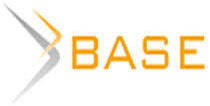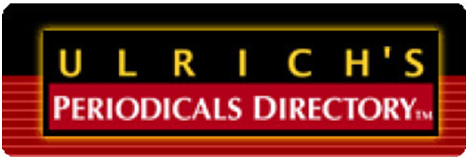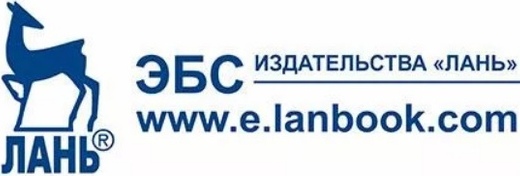Mixed reality technologies in tourism
Recently, immersive technologies, including augmented reality (AR), virtual reality (VR), have gained wide acceptance in the tourism sector. The deterioration of the state of attractions, the manifestation of the effects of overtourism, the spread of coronavirus infection are important problems world tourism is facing. The closure of tourist sites and cultural and historical sites is becoming more common due to these problems. The aim of this study is to explore the perceived value of virtual reality for the tourism industry. To achieve this goal, the document introduces the role of digital technologies such as VR, AR and mixed reality (MR). The article reveals the potential of virtual reality as a means of implementing tourist services with their partial replacement, the possibility of using wearable devices as effective marketing tools. The study analyzed statistical data on sales of virtual reality glasses, the volume of the global MR market, the number of users and leading VR users. The authors provide examples of virtual reality applications for tourist destinations. The state of the VR industry was studied separately in connection with the spread of COVID-19. Virtual reality experiences increase the desire and likelihood of travel, and augmented reality apps are used to create virtual experiences.
Sarafanova, A. G., Sarafanov, A. A. (2021), “Mixed reality technologies in tourism.”, Research Result. Business and Service Technologies, vol. 7, 4, pp. 20-33, DOI: 10.18413/2408-9346-2021-7-4-0-3
















While nobody left any comments to this publication.
You can be first.
Afzal, S., Chen, J. and Ramakrishnan, K.K. (2017), “Characterization of 360-degree videos”, VR/AR Network «17 Proceedings of the Workshop on Virtual Reality and Augmented Reality Network», Los Angeles, USA, pp. 1–6.
Anthes, C., García-Hernández, R.J., Wiedemann, M.and Kranzlmüller, D. (2016), “State of the art of virtual reality technology”, IEEE Aerospace Conference, pp. 1–19, doi: 10.1109/aero.2016.7500674.
Bazoliy, A.A.and Ushakov, D.S. (2018), “Promising directions of development of the sphere of tourist and recreational services in modern conditions”, Molodoy uchenyy, 39(225), pp. 60-63.
Bec, A., Moyle, B., Schaffer, V. and Timms, K. (2021), “Virtual reality and mixed reality for second chance tourism”, Tourism Management, 83, doi: 10.1016/j.tourman.2020.104256.
Cheong, R. (1995), “The virtual threat to travel and tourism”, Tourism Management, 16(6), pp. 417–422, doi: 10.1016/0261-5177(95)00049-T.
Dholakia, U.M. (2006), “How customer self-determination influences relational marketing outcomes: evidence from longitudinal field studies”, Journal of Marketing Research, 43 (1), pp.109–120, doi:10.1509/jmkr.43.1.109.
Fibbi, S., Spano, L.D., Sorrentino, F. and Scateni, R. (2015), “WoBo: Multisensorial travels through Oculus Rift”, Proceedings of 33rd Annual ACM Conference Extended Abstracts on Human Factors in Computing Systems, Seoul, pp. 299-302.
Flavián, C., Ibáñez-Sánchez, S. and Orús, C. (2019), “The impact of virtual, augmented and mixed reality technologies on the customer experience”, Journal of Business Research, 100, pp. 547–560, doi: 10.1016/j.jbusres.2018.10.050.
Guttentag, D.A. (2010), “Virtual reality: Applications and implications for tourism”, Tourism Management, 31(5), pp. 637–651, doi: 10.1016/j.tourman.2009.07.003.
Hassan, A., Ekiz, E.and Dadwal, S. (2018), “Augmented realty adoption by tourism product and service consumers: some emplerical findings”, book Augmented reality and virtual reality: Empowering human, place and business,
pp. 47–64.
Hassan, A.and Rahimi, R. (2016), “Consuming «innovation» in tourism: Augmented reality as an innovation tool in digital tourism marketing”, book Global dynamics in travel, tourism and hospitality, pp.130–147.
Hollebeek, L., Clark, M., Andreassen, T., Sigurdsson, V. and Smith, D. (2020), “Virtual reality through the customer journey: Framework and propositions”, Journal of Retailing and Consumer Services, 55, doi:10.1016/j.jretconser.2020.102056.
Hwang, J., Park, S. and Woo, M. (2018), “Understanding user experiences of online travel review websites for hotel booking behaviors: an investigation of a dual motivation theory”, Asia Pacific Journal of Tourism Research, 23 (4),
pp. 359–372, doi:10.1080/10941665.2018.1444648.
Kang, H. (2020), “Impact of VR on impulsive desire for a destination”, Journal of Hospitality and Tourism Management, 42, pp. 244–255, doi: 10.1016/j.jhtm.2020.02.003.
Kang, Y. and Yang, K.C. (2020), “Employing digital reality technologies in art exhibitions and museums: A global survey of best practices and implications”, book Virtual and augmented reality in education, art, and museums,
pp. 139–161.
Kim, M.J., Chung, N., Lee, C.K. and Preis, M.W. (2015), “Motivations and use context in mobile tourism shopping: applying contingency and task–technology fit theories”, International Journal of. Tourism Research, 17(1), pp. 13–24, doi:10.1002/jtr.1957.
Kosti, K.B. (2016), “Foresight of the development of augmented reality technologies in international tourism”, Izvestiya Sankt-Peterburgskogo gosudarstvennogo ekonomicheskogo universiteta.
Li, T. and Chen, Y. (2019), “Will virtual reality be a double-edged sword? Exploring the moderation effects of the expected enjoyment of a destination on travel intention”, Journal of Destination Marketing and Management, 12, pp. 15–26, doi: 10.1016/j.jdmm.2019.02.003.
Liu, Y., Li, H. and Hu, F. (2013), “Website attributes in urging online impulse purchase: An empirical investigation on consumer perceptions”, Decision Support Systems, 55 (3), pp. 829–837, doi:10.1016/j.dss.2013.04.001.
Marasco, A., Buonincontria, P., Niekerkb, M., Orlowskib, M. and Okumusb, F. (2018), “Exploring the role of next-generation virtual technologies in destination marketing”, Journal of Destination Marketing and Management, 9, pp. 138–148, doi: 10.1016/j.jdmm.2017.12.002.
Mills, S. and Noyes, J. (1999), “Virtual reality: An overview of user-related design issues revised paper for special issue on «virtual reality: User issues» in interacting with computers”, Oxford University Press, Oxford, UK.
Sarafanova, A.G.and Sarafanov, A.A. (2021), “Tourism industry and the COVID-19 pandemic: impact and consequences”, Vestnik Samarskogo gosudarstvennogo ekonomicheskogo universiteta, 7, pp. 49–60, doi: 10.46554/1993-0453-2021-7-201-49-60.
Sigala, M. (2020), “Tourism and COVID-19: Impacts and implications for advancing and resetting industry and research”, Journal of Business Research, 117, pp. 312–321, doi: 10.1016/j.jbusres.2020.06.015.
Spielmann, N. and Mantonakis, A. (2018), “In virtuo: How user-driven interactivity in virtual tours leads to attitude change”, Journal of Business Research, 88, pp. 255–264, doi: 10.1016/j.jbusres.2018.03.037.
Tussyadiah, I.P., Wang, D., Jung, T.H. and Dieck, M.C. (2018), “Virtual reality, presence and attitude change: Empirical evidence from tourism”, Tourism Management, 66, pp. 140–154, doi: 10.1016/j.tourman.2017.12.003.
Vishnevskaya, E.V. and Klimova, T.B. (2017), “Development of the tourism industry and hotel business”, Nauchnyy rezul'tat. Tekhnologii biznesa i servisa, 3, 1, pp. 22–33, doi: 10.18413/2408-9346-2017-3-1-22-33.
Wang, G., Gu, W. and Suh, A. (2018), “The effects of 360-degree VR videos on audience engagement: evidence from the New York Times”, International Conference on HCI in Business, Government, and Organizations, Springer, Cham, pp. 217–235.
Xu, F., Buhalis, D. and Weber-Sabil, J. (2017), “Serious games and the gamification of
tourism”, Tourism Management, 60, pp. 244–256, doi:10.1016/j.tourman.2016.11.020.
Yung, R. and Khoo-Lattimore, C. (2019), “New realities: A systematic literature review on virtual reality and augmented reality in tourism research”, Current Issues in Tourism, 22 (17), pp. 2056–2081, doi:10.1080/13683500.2017.1417359.